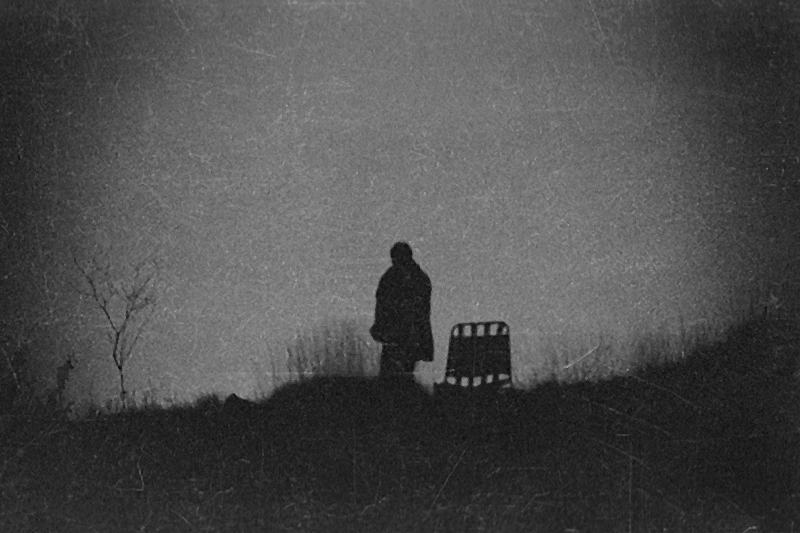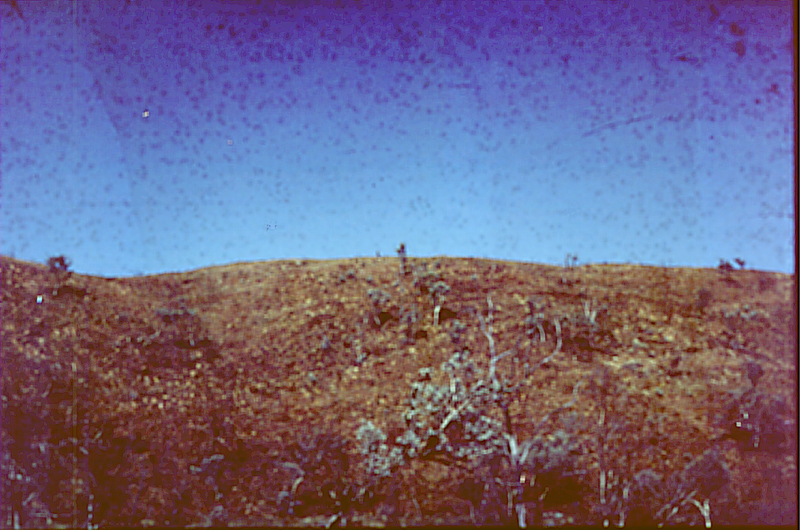
Wolf Creek Meteor crater is one of the largest and best preserved impact craters in Western Australia. It is located in the Great Sandy Desert about 120km south of the town of Halls Creek, which is about 3000km North east of Perth. My first visit to the crater was in 1984 when I spent a week camped at the crater observing the eta aquarid meteor shower. (see Wolf Creek Odyssey Astronomy, November 1985). I also visited the crater in 1989 with a group from the Murdoch Astronomical Society. However on both occassions I had major problems with photography. In 1984, the esky which contained both the film and the food overturned, submerging the film in a sea of beetroot vinegar and margarine!!! Then in 1989, the film in my camera failed to advance and the result was 18 photographs on a single frame!! The photographs below are all that were salvageable.

The crater is about 800 metres in diameter and surrounded by a raised rim. Approaching the crater the first sign of the crater is a low, unimpressive range of hills in the distance. The road(?) ends at the base of the western wall which appears as a small hill of jumbled rock about 35m high.
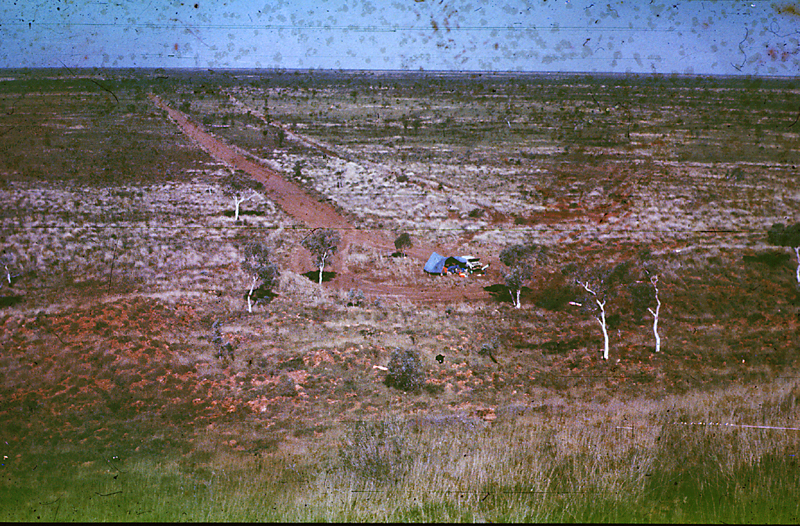
The view from the top of the wall is very impressive, with the crater appearing as a huge bowl about 60m deep.

The crater is believed to have been more than twice as deep when it was formed, but over the centuries it has filled with sand to its current depth. The floor it very flat and covered for the most part with Spinifex which can make hiking across the floor an 'interesting' exercise.
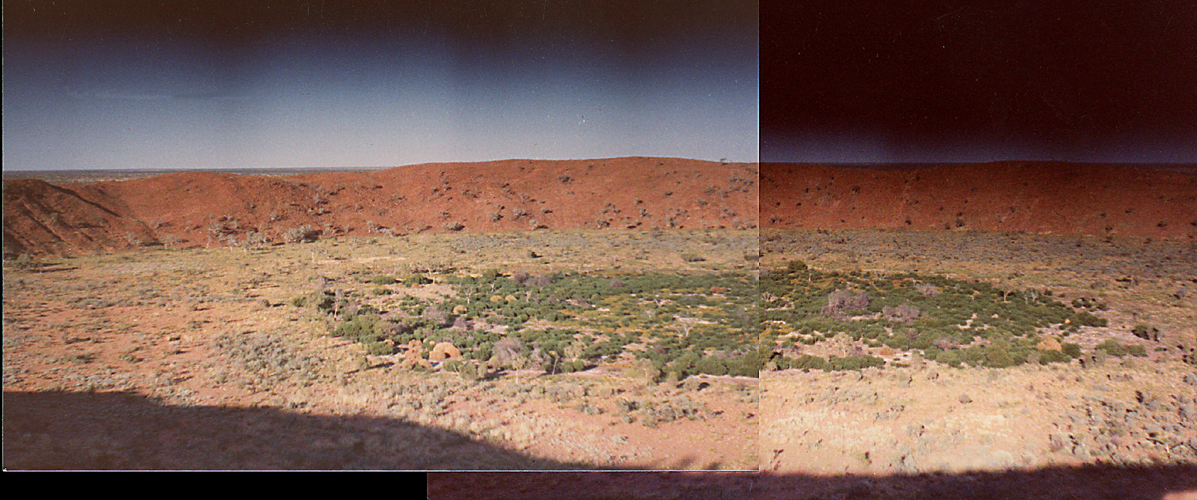
Near the center, the vegetation changes abruptly, becoming denser and greener, with many trees.
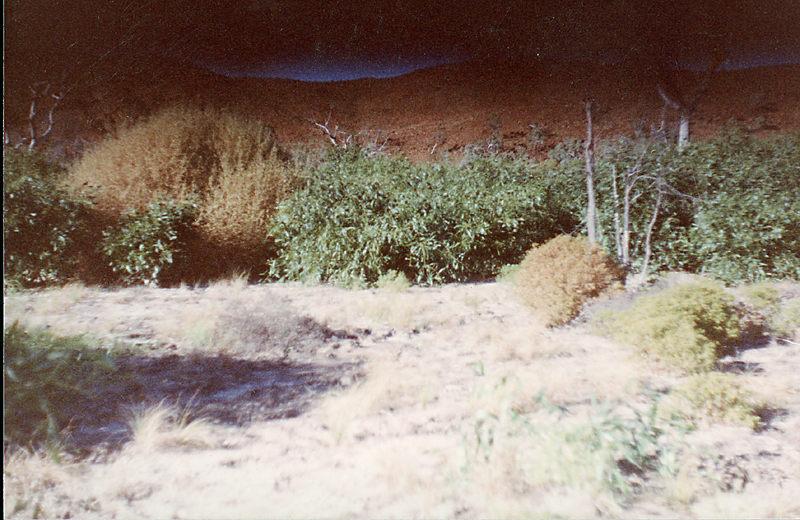
This central region contains considerable gypsum, and there are a number of sinkholes, some of which contained water. However, judging by the number of bones scattered around, I would not particularly like to drink it.

Looking at the ejecta blanket, the meteor was travelling from the north east when it impacted, as the ejecta is spread much more widely towards the south west.
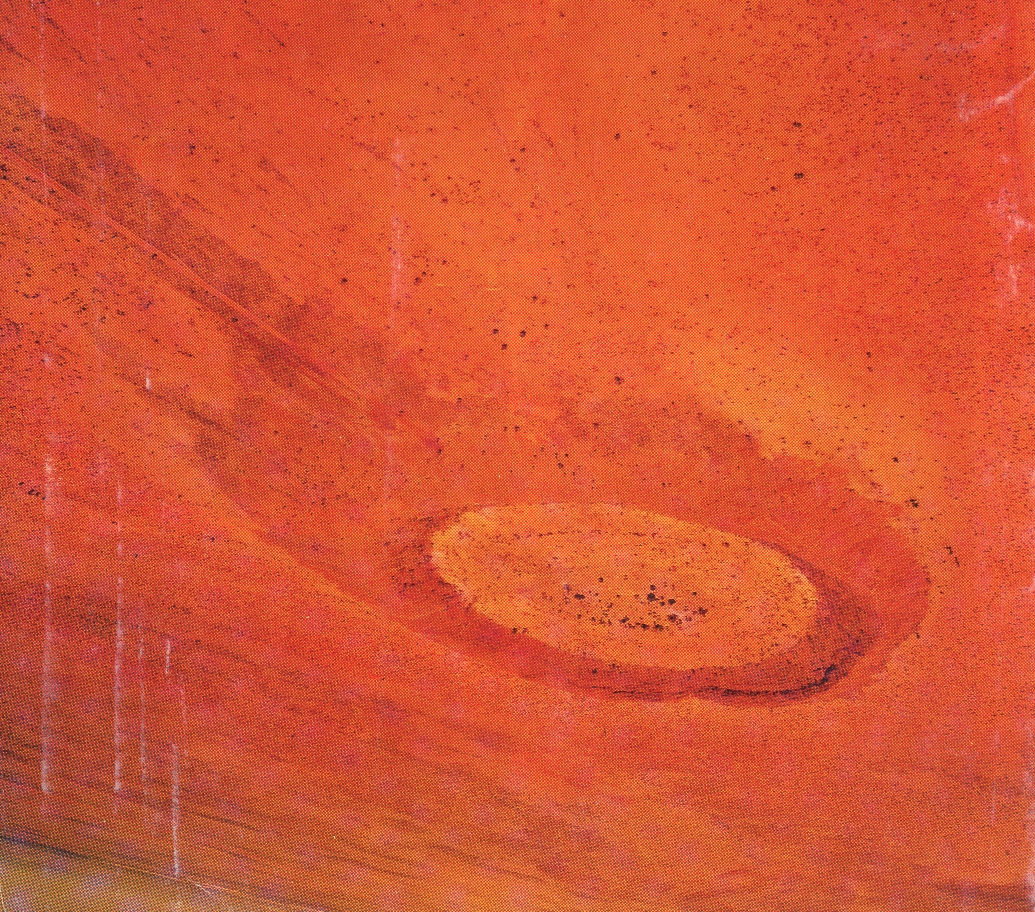
The slope of the interior walls is also much different, with the south western walls sloping fairly gently,
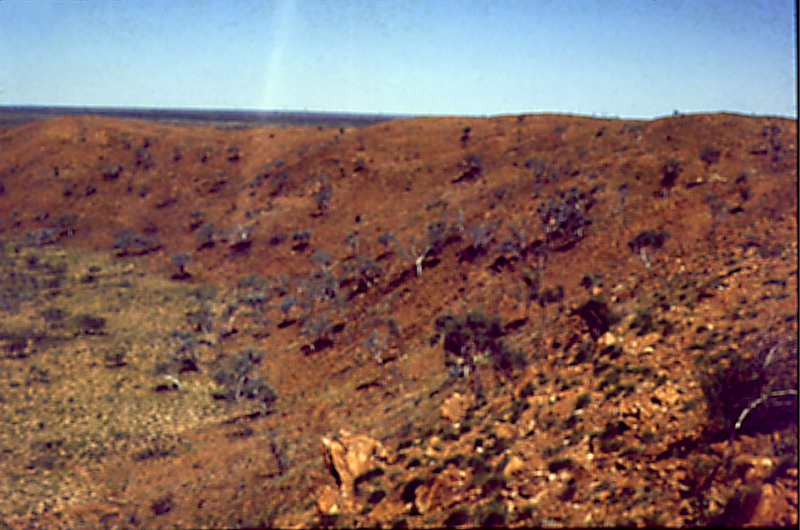
while the north eastern walls are much steeper.
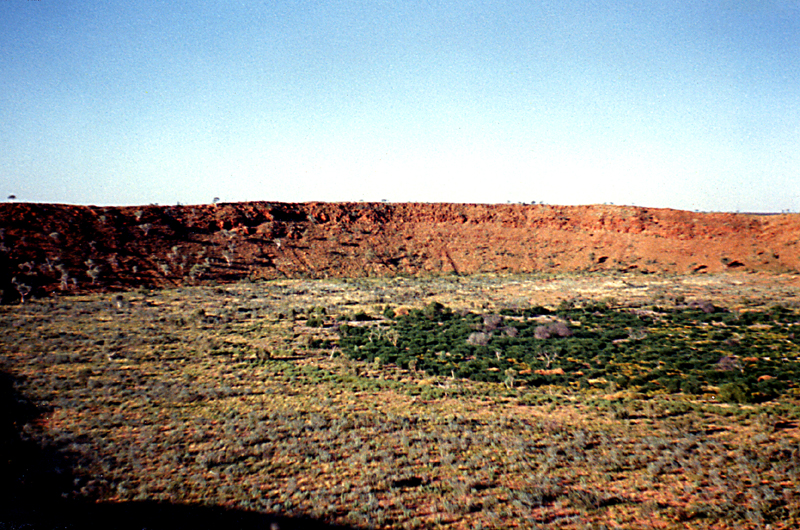
The walls are composed of shattered rock, principally quartzite.

Not much meteoric material has been recovered from the crater. Most of what has been recovered has been in the form of highly weathered shale balls.
On the last night of my visit in 1984, I had my observing companion stand on the rim, looking out over the crater at the dawn was beginning. I then photographed him from below at the campsite.
